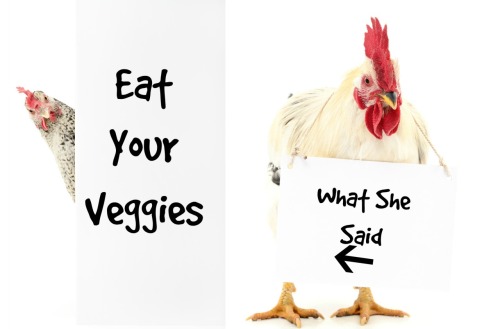
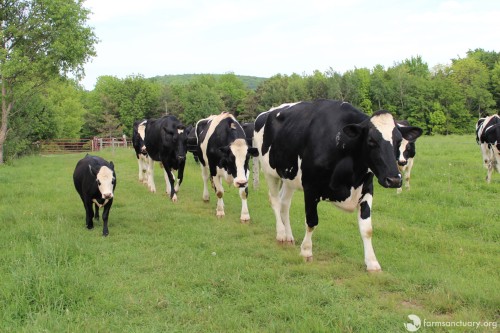
Cattle come in all shapes and sizes. Walking with the big boys, Chandini with Milbank, Lawrence, Arnold, and Tweed
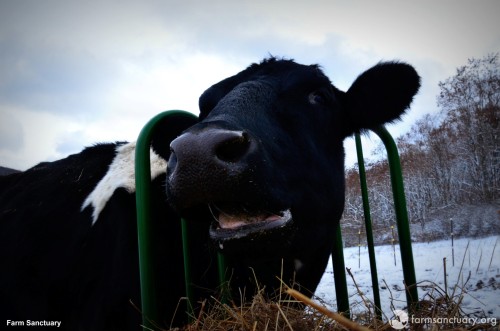
Travolta eating the fiber
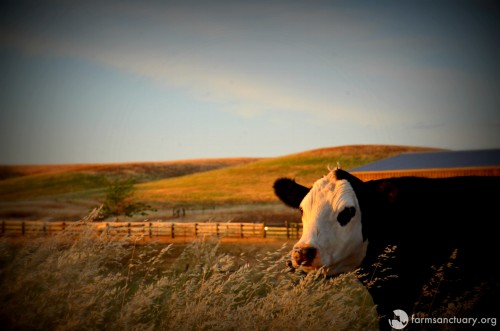
Norman our handsome Northern CA boy
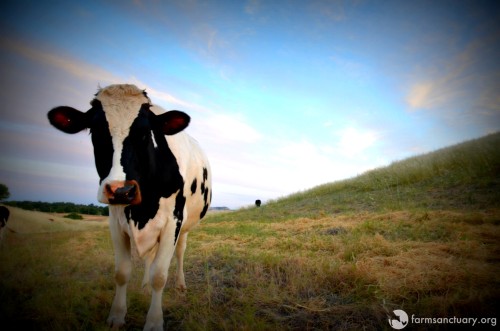
Peanut, formerly of our Southern California enjoying the big pastures at our Northern California sanctuary
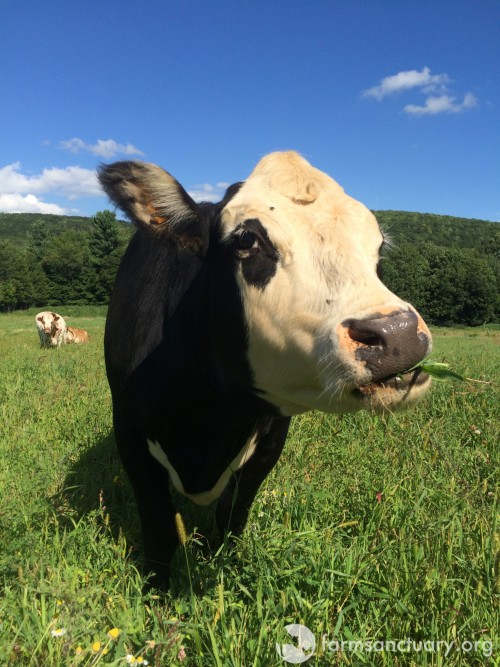
Chandini eating the greens
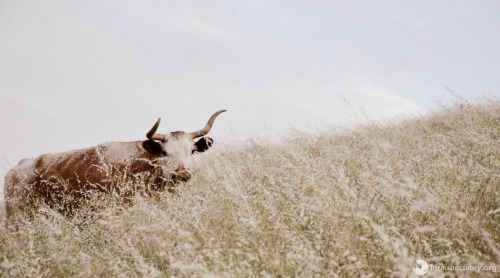
Susie Moo hiding out in the tall grass
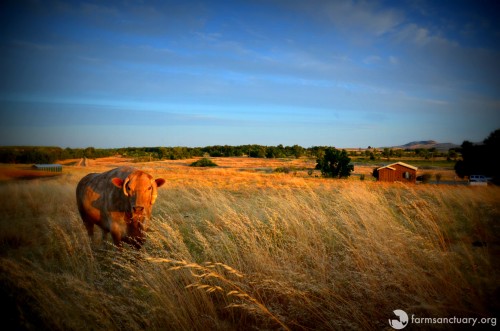
Chester at dusk at our Orland California sanctuary

Seriously- no cow wants you to eat more chicken.
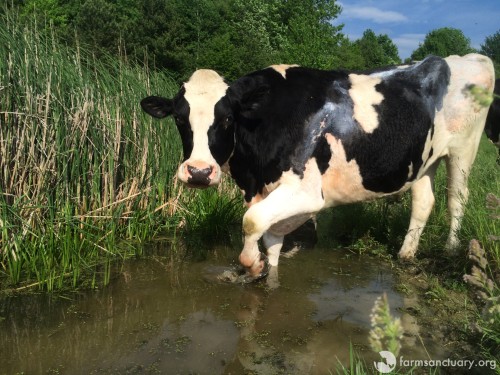
Jay taking a dip in the pond
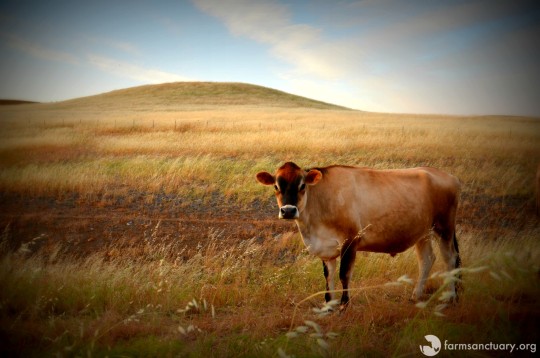
It’s Cow Appreciation Day: Show Your Appreciation by Learning 12 Fun Facts About Our Bovine Friends
Cow Appreciation Day was created by the fast-food chain Chick-fil-A, based on its advertising campaign featuring cows holding signs that say “Eat Mor Chikin”
— which makes it look like cows are campaigning to save themselves while throwing chickens under the bus. The company promotes chicken as a healthy alternative to beef — but guess what is even healthier! You guessed it: vegetables.
So today, we’re going to take the old Chick-fil-A national day and really use it to celebrate the two animals found in our logo, on all our sanctuaries, and in our hearts: the cows and the chickens! And — thanks to companies like Tofurky, Gardein, Beyond Meat, Sophie’s, Field Roast, and the list goes on and on — instead of eating more of one animal to save another, it’s easier than ever to eat a delicious plant-based meal instead.
We’ve previously shared some of the many fascinating facts about chickens (you can read about them here). So since the day is called Cow Appreciation Day, let’s hear it for the cattle!
Here are 12 fun bovine facts:
1. Not all cattle are cows.
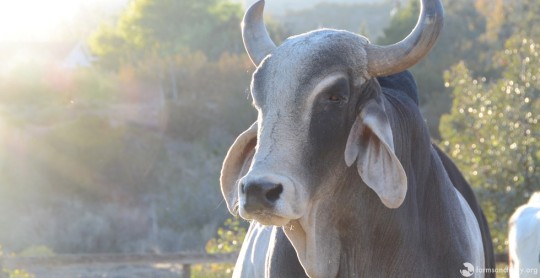
Bull (an unaltered male): Southern California Shelter resident Mr. Ed (above) is our only bull. He is a cryptorchid (one testicle did not drop), meaning that neuter surgery would be more invasive for him than it is for most bulls. Since he is an older male, increasing the risks associated with surgery, he remains a bull, but he only lives with boys (since we never allow any breeding to take place at any of our sanctuaries).
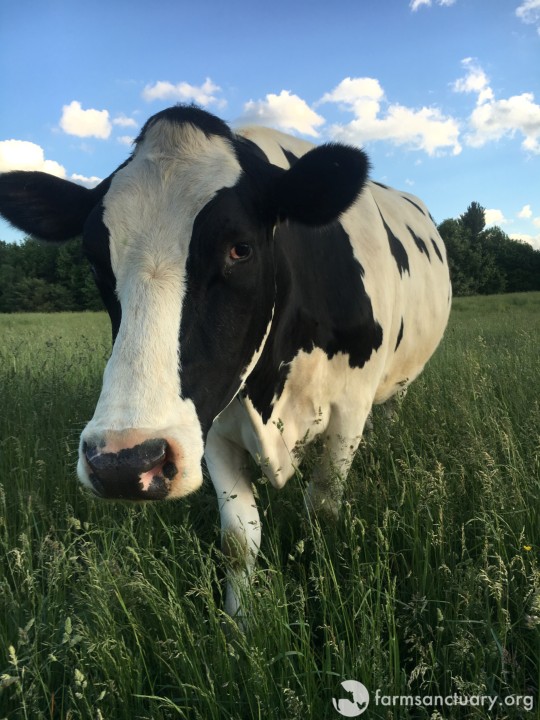
Steer (an altered, or neutered, male): Paco is a neutered male, so he is a steer!
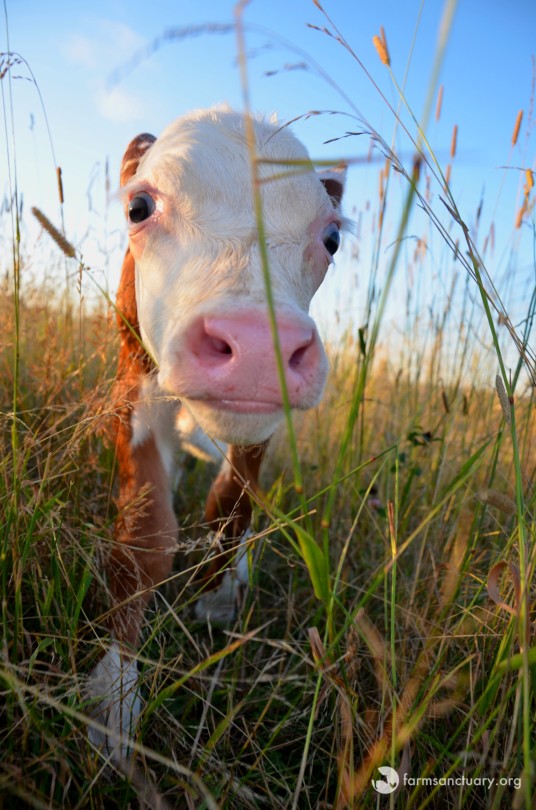
Oxen (an altered male who is used for work — plowing, etc.): Pappas is an oxen, and his job is to turn people into plant eaters. And he loves to plow through the grass.
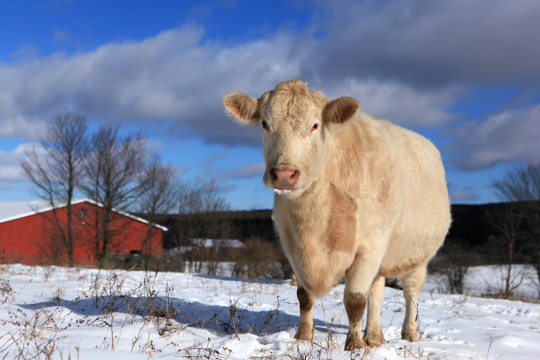
Heifer (a female who has not given birth): Elsie May came to Farm Sanctuary as a baby (meaning that, unlike many of our residents who were rescued from situations where they were used for breeding, she has never had a calf), so she is a heifer.

Cow (a female who has had a calf): Belinda (above right) was pregnant when she arrived at sanctuary, but also had a baby with her: Octavia. Belinda is a cow! Octavia is a heifer.
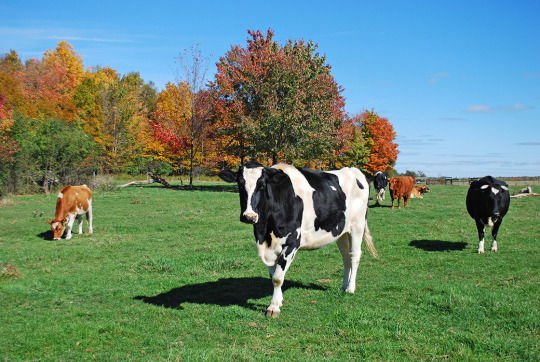
Freemartin (a female who is presumed to be sterile because she was born with a male twin; freemartins are usually larger than other females and have some male characteristics): Faith (front and center) is a freemartin, and you can see that she is quite large compared to the other girls (like Lili — back right).
2. Domestic cattle are ruminants.
What are ruminants? In summary, they are animals with a four-chambered stomach, which allows them to eat plants that are super-coarse — like hay, tough grasses, and even tree bark — that other mammals cannot digest. The rumen is like a fermentation vat. The food is constantly being mixed, and the flora of the rumen breaks down the fiber. Cattle lie down during the day and ruminate (as do sheep and goats). This is regurgitation of a bit of the rumen contents that they then chew more and swallow again. This is cud chewing.
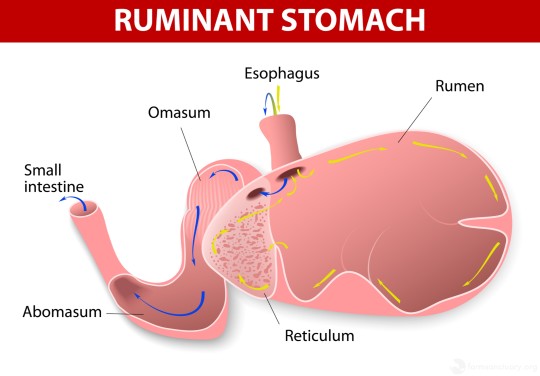
Cattle produce some serious saliva daily.
Between 26-40 gallons! This saliva is rich in bicarbonate, which buffers the acid produced in the rumen and maintains the pH of the rumen. It is also the fluid needed for fermentation.
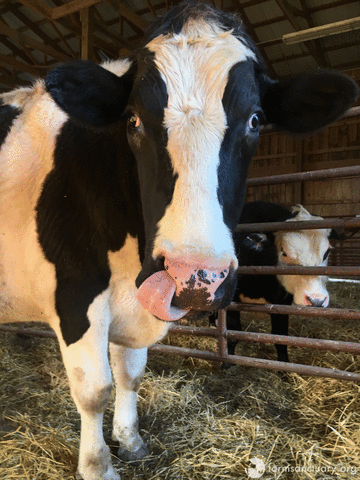
3. Cattle are herbivores.
Wherever do they get their protein? And if you are worried that being an herbivore makes you weak, get a load of these bovines:
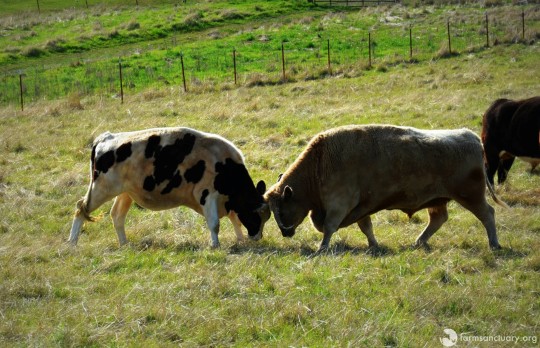
As powerful as a truck, these plant-based eaters are all muscle.
Some of our largest boys weigh more than 2,500 pounds, which is pretty heavy!
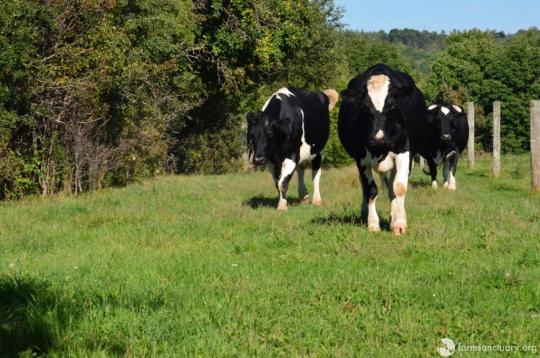
Sonny, Travolta, and Lili proving that a plant–powered diet makes for some strong and very giant beings!
Cattle need a very high-fiber diet, and grass and hay are their main (if not their entire) food source. When our older cattle start to lose their teeth, we need to provide them with a high-fiber mash — that can get pretty messy.
Stella eating her mash.
Cattle have a crazy mouth with no upper front teeth, but instead a hard dental plate. They have super-grindy grinder teeth in the back to break down that stiff roughage they eat, but their smile is incredible.
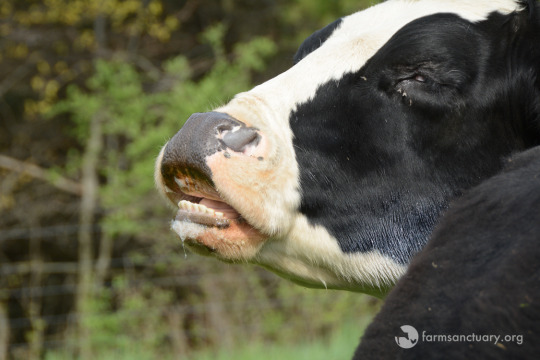
Jay showing the dental plate.
4. Cattle love to eat.
A cow in the dairy industry who is milking consumes around 100 pounds of feed each day and around 40 gallons of water.
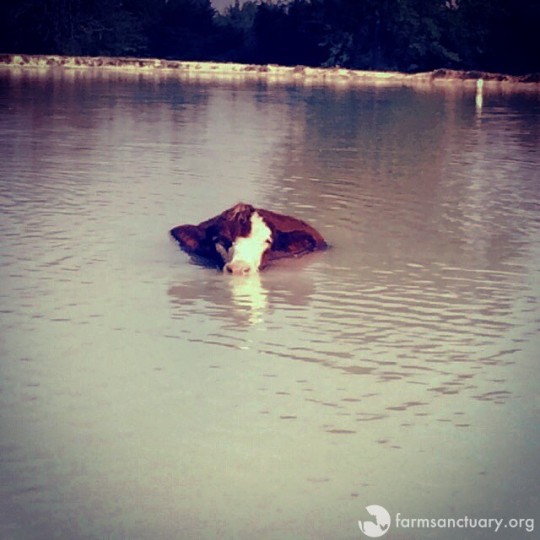
Big Boy, living in Mississippi with one of our adopters, likes to take a dip while consuming the 40 gallons of water or more a day.
Our cattle are obsessed with apples and actually eat all they can reach — then help shake the branches for other, shorter cattle to eat.
Lawrence steer demonstrates his tree-shaking prowess.
5. Holy Cow
Hindu nations consider cows to be sacred, and there are strict laws in place to protect them. The toughest come from the central Indian state of Madhya Pradesh, where anyone convicted of killing a cow or taking it somewhere to be killed can be jailed for up to seven years.
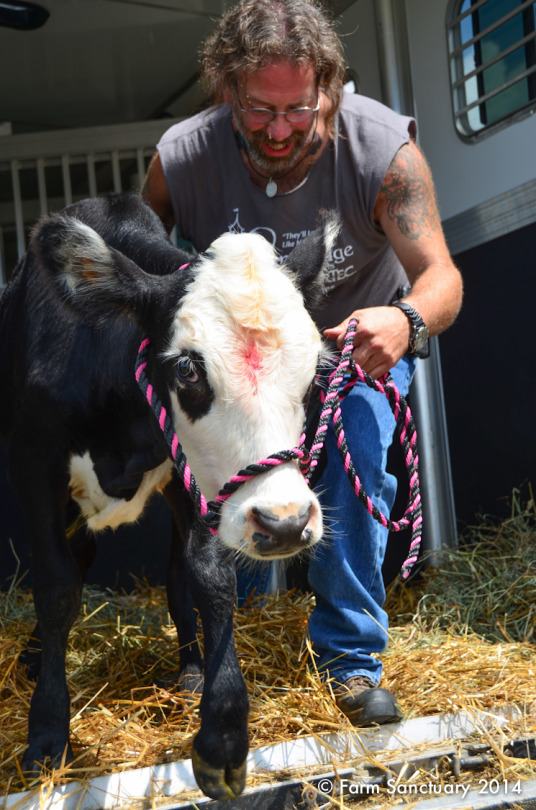
Mike Stura bringing Chandini home to sanctuary after her big party.
In the Hindu tradition, the cow is honored, garlanded, and given special feedings at festivals all over India. The most important is the annual Gopashtama festival.

Chandini came to us after a Gow Daan ceremony in NYC.
6. Smaller-breed cows can live up to 30 years
Even though cows can live into their late twenties, most of the males (both bulls and steers) have leg issues early due to their enormous size.
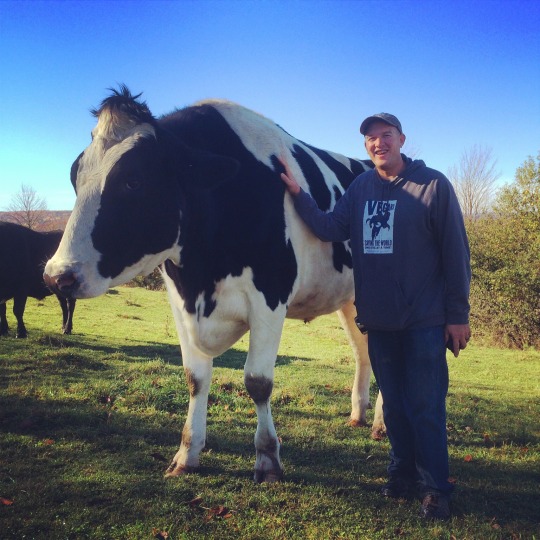
Chad Richmond, our Facilities Maintenance Manager, with Alexander. Chad is over 6 feet tall!
7. Cattle are extremely curious and wicked smart
If there is something new in the pasture — including a cat, a jacket, a bowl, or anything odd — a bovine will be on it. They are super curious. They are also highly intelligent and great problem solvers. They learn to open gates or get through weak areas of fence — and once they learn, they continue to repeat the behavior or use it in another scenario.
William steer shows off his gate-opening skills. (We implemented new gate-security measures after he taught himself this trick, but captured it first for posterity.)
Cattle get excited when they solve problems. In a study, when faced with the challenge of finding out how to open a door in order to reach food, their heartbeats went up, their brainwaves showed excitement, and some even jumped into the air!
8. Cattle Senses Are Highly Developed
Cattle can smell up to six miles away — so don’t think you are going to sneak food in without someone noticing.
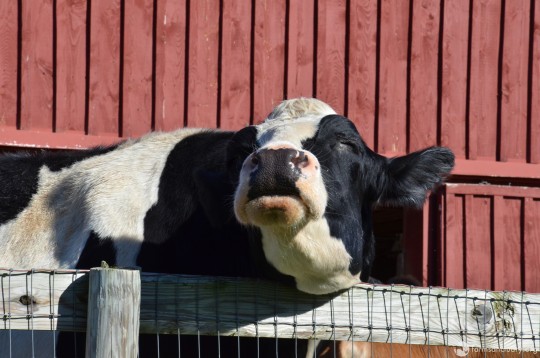
Something smells delightful!
Cattle can hear both low and high frequency sounds beyond human capability.
They have nearly 360 degrees of vision, with blind spots only right in front of them and directly behind them.
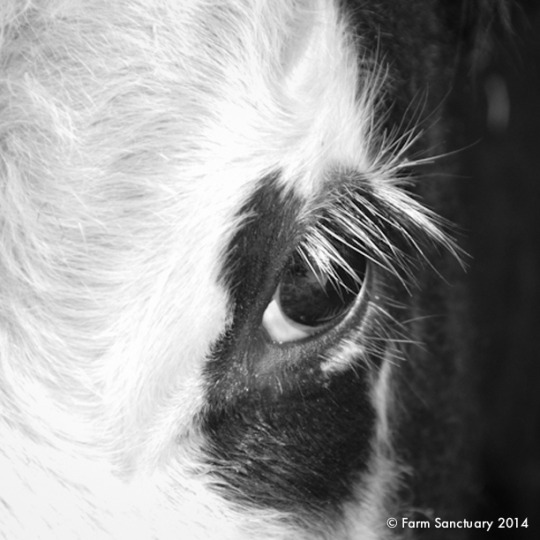
9. Cattle Are So Emotional
Cattle show signs of depression after the loss of a loved one; show happiness when they get to see someone they love (human or animal); and mourn, often very loudly, at the death of one of their people.
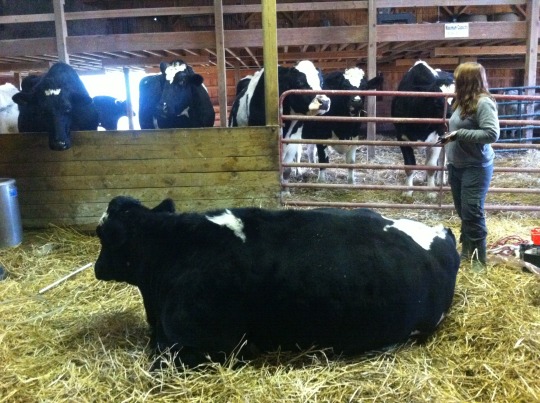
Fanny was shutting down, and the boys who love her like a mother gathered around to check on her.
Cows show their excitement when let out into a field after long periods confined indoors — or in the case of our resident cattle, when they are allowed out on larger pastures. There are multiple videos out there of cows running and jumping as they are exiting their barns, which seem to have a tendency to be mistaken for videos of them being released from the industry. It is just happiness about going outside.
Cattle-frolicking supercut!
Happy cows jump in the air, run and kick, buck and almost seem to dance.
Diane cow demonstrating her happy dance.
10. Cattle hold grudges
This can be with people and other cattle, and it can go on for years and years. Like elephants, they do not forget.
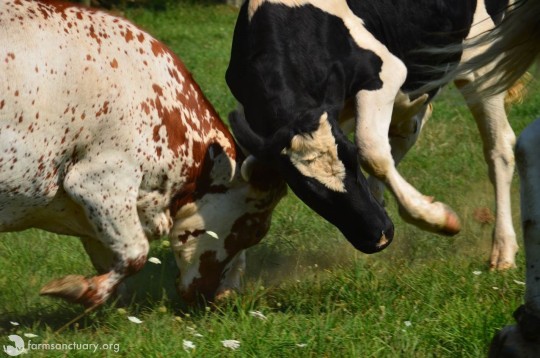
“I said leave me alone, Tristan.“ Queenie putting this young boy in his place.
11. Cattle Are Family
Cattle like to sleep close to their families, and sleeping arrangements are determined by individuals’ rank in the social hierarchy.
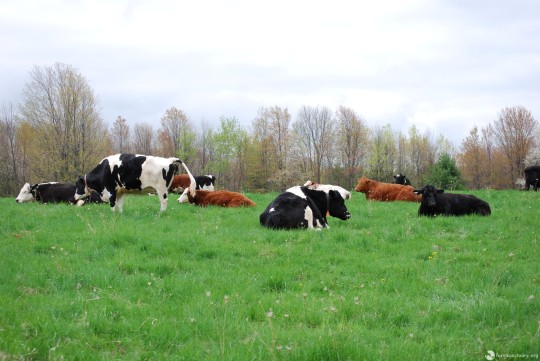
Cattle sleeping together on the pasture.
Cows are super moms and will walk for miles to find their calves.
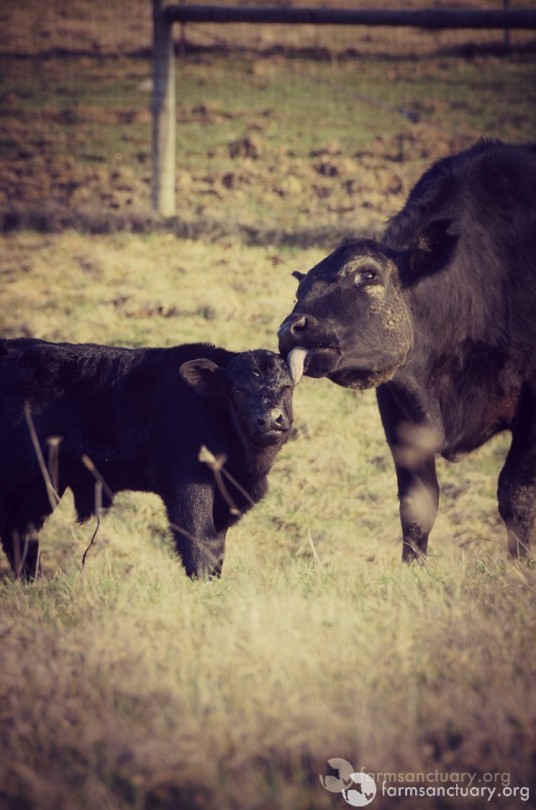
Cheryl and her beautiful son Pecan.
Cattle carry their babies for nine months — just like humans.

A very, very pregnant Belinda.
Cattle love to groom each other and even groom their human friends — but watch out for that crazy sandpaper tongue.
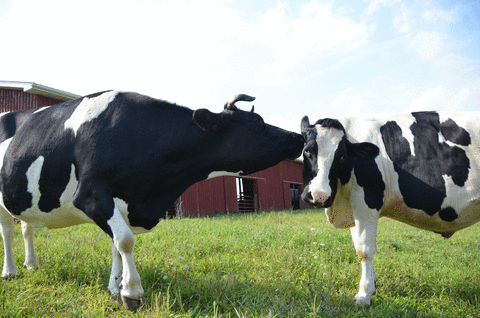
Diane showing the love to her buddy Ted!
Cows cannot handle being alone. They are herd animals and highly social, and they only isolate themselves if they are very sick or before giving birth. If you see a lone cow, there is likely a reason.

Cattle choose their buddies, and Ari chose Nik. They are inseparable best friends, although they recently added Chandini and new guy Frank to the mix.
Cows can live with other species, but what we have found is that they prefer to be with their own people.
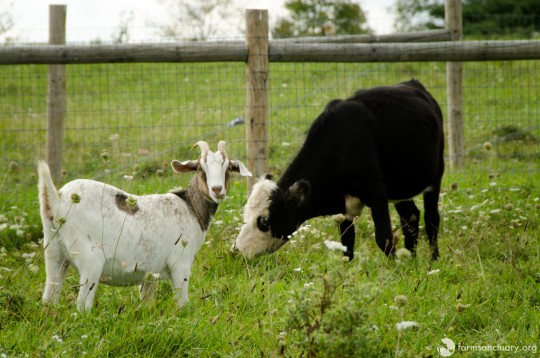
Chandini lived with goats when she first arrived, but spent hours mooing to the cattle across the farm.
12. Cattle form close personal relationships with two to three other individuals.
Cows have favorite friends and become stressed when they are separated from those friends. In a study measuring isolation, heart rates, and cortisol levels, researcher Krista McLennan concluded, “When heifers have their preferred partner with them, their stress levels in terms of their heart rates are reduced compared with if they were with a random individual.” We see that here when one of the cattle has to be isolated due to illness or injury, or when someone has to go to the hospital off-site. Whenever possible, none of our animals is hospitalized alone.
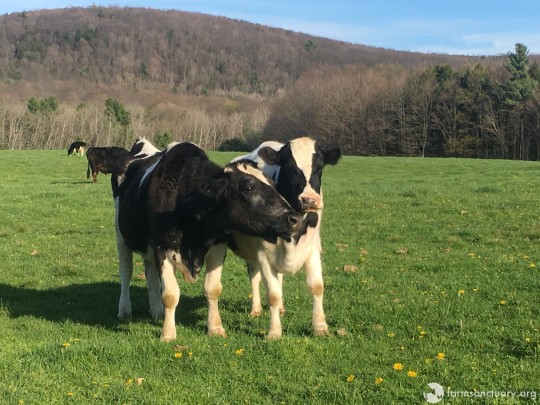
Best old gal pals Stella and Belinda. Together, they almost have a full set of teeth.
Cattle are awesome — and so are chickens! So remember, on Cow Appreciation Day and every day: Peace Begins on Your Plate — Eat More Veggies!
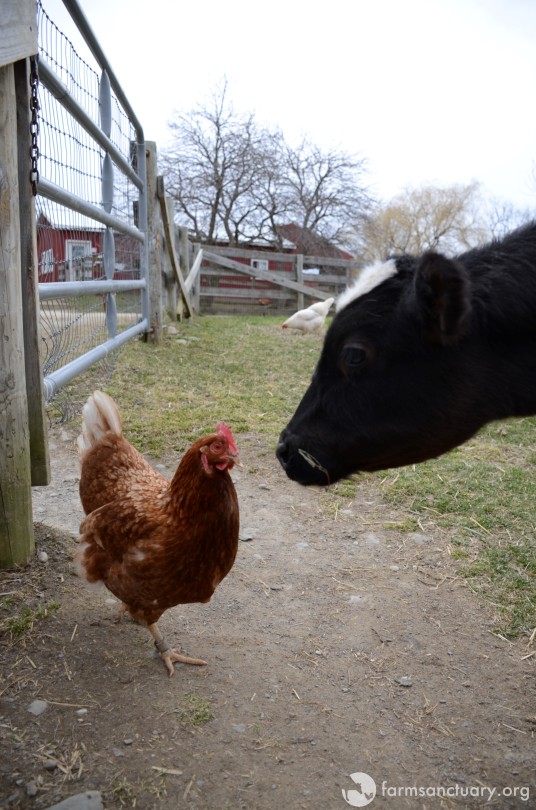
Valentino loves his chicken friends, and especially Miranda. If you knew anything about cattle, you would know that they would never tell you to eat more chicken. But definitely more leafy greens!
Enviroshop is maintained by dedicated NetSys Interactive Inc. owners & employees who generously contribute their time to maintenance & editing, web design, custom programming, & website hosting for Enviroshop.
